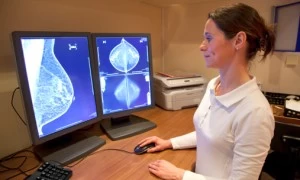Diagnostic Spinal Angiography
What is a spinal angiogram?
Spinal angiography is an outpatient procedure that is often performed under conscious sedation. For patients that have difficulty with sedation or are likely to be uncomfortable in a supine position for 1-2 hours, general anesthesia may be considered. This allows both for patient comfort and high-resolution images not degraded by motion artifact. Local anesthesia is administered to the right groin area. The femoral artery is accessed with a small needle, allowing for the introduction of a diagnostic catheter. The catheter is then advanced into the aorta and used to access the arteries of the spine. Depending on the level of suspicion for a vascular lesion or pre-procedural imaging, angiography may be confined to a few levels of the spine. Otherwise, the entire spine is imaged along with the arteries of the head and neck. Once the procedure is complete, the catheter is removed and pressure is applied to the groin for 20 minutes. Patients then recover for 4 hours in the post-procedure recovery area prior to discharge home.
For what conditions is a spinal angiogram performed and why?
Spinal angiography is mainly performed to evaluate for a possible abnormal connection between an artery and a vein (fistula), which is often first suggested by a preceding MRI scan. If a fistula is identified, spinal angiography provides exquisite anatomic detail to be able to determine if treatment is possible via a catheter or requires surgical intervention. Rarely, aneurysms of the spinal arteries may be identified. A separate application is for the evaluation of spinal tumors prior to surgery. Spinal angiography allows us to determine if the tumor has a rich blood supply. This is valuable for a spine surgeon to know prior to attempting surgery, as we are able to inject tiny particles into the blood vessels supplying the tumor. This reduction in blood supply corresponds to a decrease in intraoperative blood loss and safer surgery.




































































